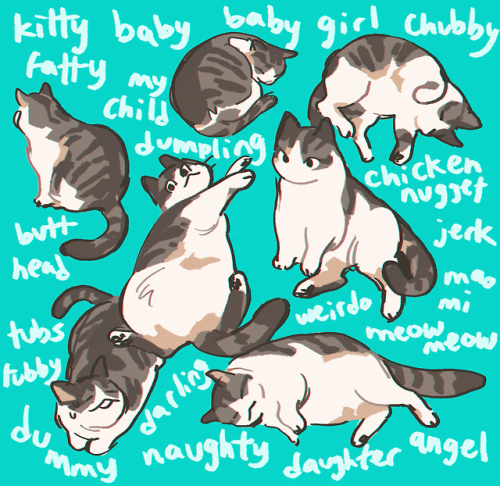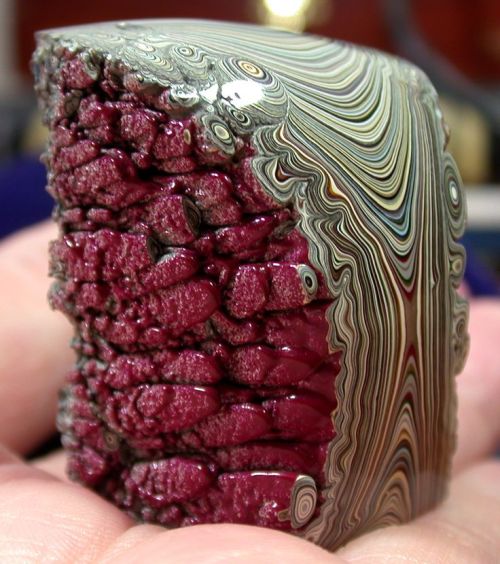Wind-induced Ripple Bedform With An Obstacle (grass At The Center) That Resulted In Shadow-like Impressions

Wind-induced ripple bedform with an obstacle (grass at the center) that resulted in shadow-like impressions by flow disturbance. Wind direction from lower left to upper right. On the coastal dunes along the shore of Niigata city.
風による堆積物の模様と草の障害物による流れの乱れの痕跡
More Posts from Rocks-everywhere and Others

I am a peddler of chubby cat pics
Peering back in time over 420 million years ago into the Silurian Period when the first land plants emerged. Pictured in the foreground are Baragwanathia and Zosterophyllum with their pinkish coloured sporangia for dispersing spores. More to come soon from this project with biologist and fellow fossil plant enthusiast Ken Kwak.

cats are so beautiful and loving…. when they paw at you and ask u to pet them.. when they purr and close their eyes in content… a warm loaf … when they knead on you… thinking YOU are the bread… stupid… they are the bread… i love cats… so much….

my cat goes by many names
I miss doing microscope work. Can we make a thread of our favourite thin section? This is mine
Actinolite Schist


Fordite, also known as Detroit agate, is old automobile paint which has hardened sufficiently to be cut and polished. It was formed from the built up of layers of enamel paint slag on tracks and skids on which cars were hand spray-painted (a now automated process), which have been baked numerous times.
What if... what if I WANT an info dump???
Then you're my favorite and I will dump SO much info on natrocarbonatite lava
No one knows for sure why or how this type of lava forms. Oldoinyo Lengai is the only volcano on earth that actively erupts it currently, and Oldoinyo Lengai hasn't been extensively studied.
The factor that causes lava to be viscous (thick, and sticky) is its silica content. Rhyolitic magmas, like those in Washington, have around 70 weight % silica. Basaltic magmas, like the volcanoes in Hawai'i, are around 45 wt% silica. Natrocarbonatite lava is less than 3% silica. Its flow rate is close to water, so it flows faster than you can outrun.
It's also a LOT less hot than other lavas. Most lavas are from 700-1200 degrees C (basaltic lavas in the higher range, rhyolitic lavas in the lower), but natrocarbonatite is around 500-600 degrees C. It's cool enough that you won't immediately die if you fall into it (you'll be hospitalized for months, as one man who fell into it was, but it's survivable). It's so cool that you can't see it glow in daylight.

It flows black and cools white! This is because of its content of the minerals nyerereite and gregoryite, which are unstable and break down quickly when exposed to humidity.
Basically it's cool as fuck literally and figuratively and I'm obsessed with it


Summer Dreaming

At this time of year, the sight of some battered bird-built structures can trigger summer dreams. Consider the Baltimore Oriole nest dangling from a linden branch above a Flagstaff Hill sidewalk in Pittsburgh’s Schenley Park. Watch the bundle of plant fiber and ribbon scraps sway in a cold late winter wind and you might be able to imagine the nest partially concealed by bright green leaves and periodically visited by a bird with goldfish-orange feathers.

Baltimore Oriole pair in CMNH Bird Hall with nest and nest cross-section.
Such out of season thoughts are far from original. One hundred and sixty-one years ago, and some 500 miles northeast of Pittsburgh, naturalist Henry David Thoreau used a different common name for the species when he referenced the bright and melodic warm season residents in a winter journal entry.
What a reminiscence of summer, a fiery hangbird’s nest dangling from an elm over the road when perhaps the thermometer is down to -20, and the traveler goes beating his arms beneath it! It is hard to recall the strain of that bird then.
Henry David Thoreau – journal entry December 22, 1859
Patrick McShea works in the Education and Visitor Experience department of Carnegie Museum of Natural History. Museum employees are encouraged to blog about their unique experiences and knowledge gained from working at the museum.
-
 sweetsweatbee liked this · 1 year ago
sweetsweatbee liked this · 1 year ago -
 bonnibel-fox reblogged this · 3 years ago
bonnibel-fox reblogged this · 3 years ago -
 bonnibel-fox liked this · 3 years ago
bonnibel-fox liked this · 3 years ago -
 liviwithwifi liked this · 4 years ago
liviwithwifi liked this · 4 years ago -
 jovian-dragoon liked this · 4 years ago
jovian-dragoon liked this · 4 years ago -
 trerti reblogged this · 4 years ago
trerti reblogged this · 4 years ago -
 red-umbrella-811 reblogged this · 4 years ago
red-umbrella-811 reblogged this · 4 years ago -
 red-umbrella-811 liked this · 4 years ago
red-umbrella-811 liked this · 4 years ago -
 teaandcrumpetsqueer reblogged this · 4 years ago
teaandcrumpetsqueer reblogged this · 4 years ago -
 witchmarvin reblogged this · 4 years ago
witchmarvin reblogged this · 4 years ago -
 dragon-smite157 liked this · 4 years ago
dragon-smite157 liked this · 4 years ago -
 eveningrelics liked this · 4 years ago
eveningrelics liked this · 4 years ago -
 onesmallblackpuppy liked this · 4 years ago
onesmallblackpuppy liked this · 4 years ago -
 hellenism-baby liked this · 4 years ago
hellenism-baby liked this · 4 years ago -
 twoheaded-rat liked this · 4 years ago
twoheaded-rat liked this · 4 years ago -
 junglecrow liked this · 4 years ago
junglecrow liked this · 4 years ago -
 phoenyxnightbyrd liked this · 4 years ago
phoenyxnightbyrd liked this · 4 years ago -
 ruby-seadragon liked this · 4 years ago
ruby-seadragon liked this · 4 years ago -
 proteusolm liked this · 4 years ago
proteusolm liked this · 4 years ago -
 allosauroid liked this · 4 years ago
allosauroid liked this · 4 years ago -
 sleepymech liked this · 4 years ago
sleepymech liked this · 4 years ago -
 skelly-swears liked this · 4 years ago
skelly-swears liked this · 4 years ago -
 grim-witch liked this · 4 years ago
grim-witch liked this · 4 years ago -
 blackbearmagic reblogged this · 4 years ago
blackbearmagic reblogged this · 4 years ago -
 kinectcorn reblogged this · 4 years ago
kinectcorn reblogged this · 4 years ago -
 tocasia liked this · 4 years ago
tocasia liked this · 4 years ago -
 windymarshfens liked this · 4 years ago
windymarshfens liked this · 4 years ago -
 mrcorystraw reblogged this · 4 years ago
mrcorystraw reblogged this · 4 years ago -
 waysssss reblogged this · 4 years ago
waysssss reblogged this · 4 years ago -
 importsys reblogged this · 4 years ago
importsys reblogged this · 4 years ago -
 kinectcorn liked this · 4 years ago
kinectcorn liked this · 4 years ago -
 fc230nya reblogged this · 4 years ago
fc230nya reblogged this · 4 years ago -
 8o80 liked this · 4 years ago
8o80 liked this · 4 years ago -
 hickeybickeyboo liked this · 4 years ago
hickeybickeyboo liked this · 4 years ago -
 sludgewarden reblogged this · 4 years ago
sludgewarden reblogged this · 4 years ago -
 hatfish reblogged this · 4 years ago
hatfish reblogged this · 4 years ago -
 multi-trackdrifting liked this · 4 years ago
multi-trackdrifting liked this · 4 years ago -
 sweaterbaby22 liked this · 4 years ago
sweaterbaby22 liked this · 4 years ago -
 hee-hoo-cat liked this · 4 years ago
hee-hoo-cat liked this · 4 years ago -
 satyrcores reblogged this · 4 years ago
satyrcores reblogged this · 4 years ago
225 posts